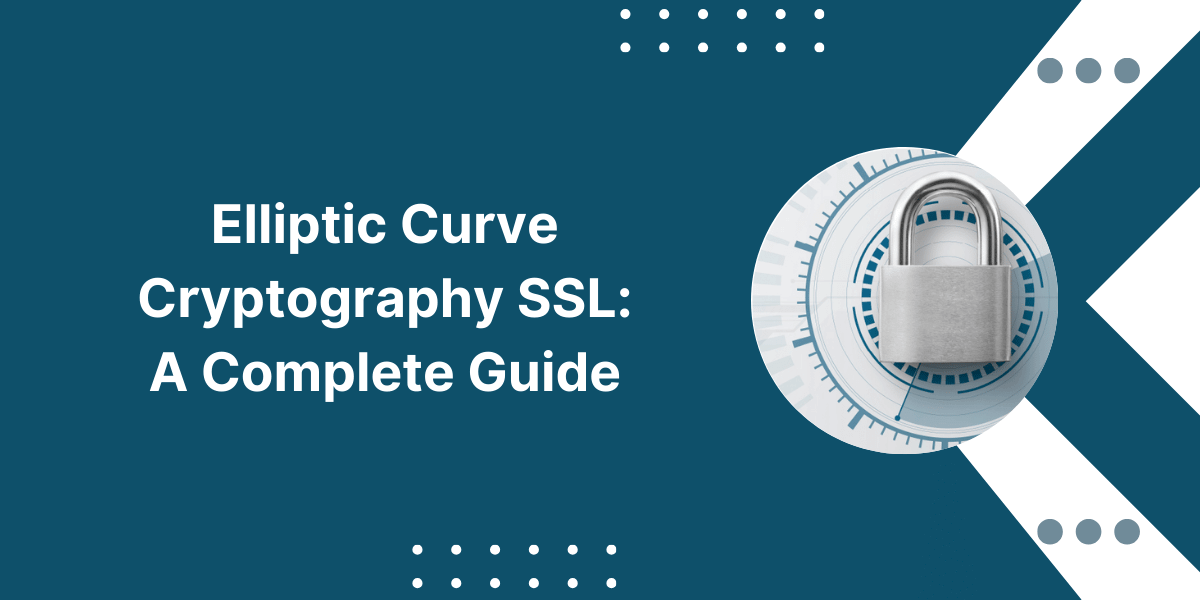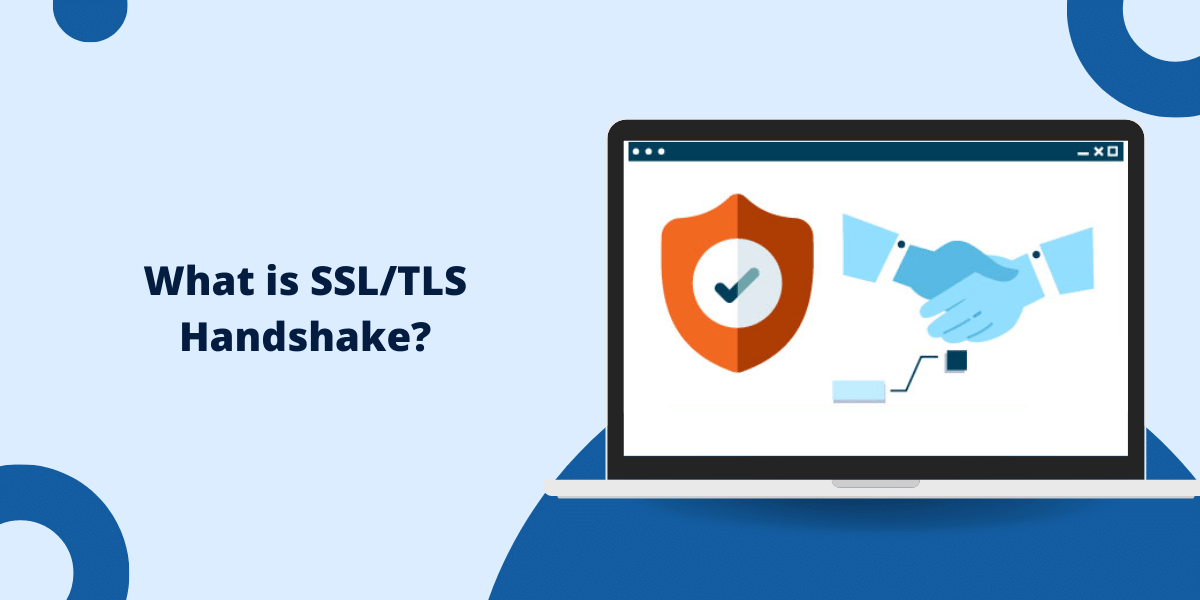Getting Started with Elliptic Curve Cryptographic SSL
Elliptic curve cryptography (ECC) is an approach to public-key cryptography that is based on elliptic curves over finite fields. ECC is increasingly used for securing communication and transactions, especially for SSL/TLS connections which require high levels of security with small key sizes.
This comprehensive guide will explain what Elliptic Curve Cryptography SSL is, how it works at a high level, its advantages over other cryptosystems like RSA, and its usage in SSL/TLS and other applications. We’ll also cover some basics of elliptic curve math and cryptography concepts to provide context.
What is Elliptic Curve Cryptography
Elliptic curve cryptography was independently proposed in 1985 by Neal Koblitz and Victor Miller as an alternative to established public-key systems like RSA. ECC has attracted attention due to its security being based on the hardness of the elliptic curve discrete logarithm problem (ECDLP). This allows ECC cryptosystems to achieve the same security as RSA but with much smaller key sizes, reducing storage and transmission requirements.
Some key things to know about elliptic curve cryptography:
- Relies on algebraic structure of elliptic curves over finite fields
- Security depends on hardness of ECDLP
- Allows same security as RSA but with much smaller keys
- Widely used for SSL/TLS, cryptocurrencies, embedded devices, etc.
Public-key cryptography involves a public key used to encrypt messages and a private key used to decrypt them. The keys are mathematically related but the private key cannot feasibly be derived from the public key. The math behind generating the keys involves elliptic curves.
Next we’ll briefly cover some necessary math background before explaining how ECC is able to generate the public and private keys.
Elliptic Curve Math Primer
To understand how ECC works, we need some mathematical background on elliptic curves. Those without a math background can skip this section and focus more on the cryptography parts.
An elliptic curve is a type of cubic equation of the form:
y^2 = x^3 + ax + b
Where a and b are constants. The set of points (x,y) that satisfy the curve equation plus a “point at infinity” form an abelian group with addition as the group operation.
Elliptic curves over real numbers are of limited cryptographic interest. ECC uses elliptic curves over finite fields of integers modulo p where p is a large prime number. This provides the necessary mathematical structure for ECC.
The addition of two points on the elliptic curve is visualized geometrically as drawing a line between the points, finding where it intersects the curve again, and reflecting that point across the x-axis. This gives the sum of the points.
This addition operation allows integers to be multiplied by repeated point additions, enabling the discrete logarithm problem on which ECC security relies. It is what links the private and public keys mathematically.
Now we’ll explain how the ECC keys are actually generated and used for encryption/decryption.
How Elliptic Curve Cryptography Works
Public-key cryptosystems like ECC rely on trapdoor functions – easy to compute in one direction but difficult to reverse unless you have special information (the private key). For ECC, this trapdoor function is point multiplication on an elliptic curve using the repeated addition operation described above.
Here are the basic steps for ECC key generation and use:
- Choose an elliptic curve and a public base point G on the curve
- Pick a random private key d as an integer
- Multiply G by d to obtain public key Q (Q = dG)
- To encrypt message m, choose random integer k and generate ciphertext C (C = kG + mQ)
- To decrypt C, multiply by d ( Cd = kdG + mdQ = mQ)
The private key d is the “trapdoor” that allows the message to be recovered by reversing the computation. d cannot be deduced from Q without solving the elliptic curve discrete logarithm problem, which is believed to be very difficult.
The security of ECC relies on the choice of strong parameters for the curve and also that d and k are random and not reused. In practice, ECC is implemented in cryptographic libraries that handle the mathematical operations and parameter selection.
Now that we’ve seen the basics of how ECC works mathematically, we’ll look at some of its major advantages.
Advantages of Elliptic Curve Cryptography
Compared to predecessor public-key cryptography systems like RSA, ECC offers several significant advantages:
- Smaller Key Size – ECC can achieve equivalent security with much smaller keys. A 256-bit ECC key provides comparable security to a 3072-bit RSA key. This saves memory, bandwidth, and computing power.
- Speed – ECC is faster at equivalent security levels for encryption/decryption and digital signatures. Operations on an elliptic curve are faster than exponentiation in RSA.
- Scalability – ECC security scales well to future advances in computing power and algorithms. The key size can be increased slightly to account for improved attacks.
- Standardization – ECC is standardized and supported by common protocols like TLS, reducing the need for proprietary cryptography.
ECC enables strong security for constrained environments like embedded systems and the Internet of Things, where RSA keys would be too large. Next we’ll look at the important usage of ECC for SSL/TLS on the web.
Elliptic Curve Cryptography in SSL/TLS
The Transport Layer Security (TLS) protocol secures communications over the web by providing end-to-end encryption. TLS is widely used for HTTPS web browsing, email, messaging, and other applications.
Most modern TLS connections use ephemeral ECC key exchange for setting up shared secrets for symmetric encryption. Sites with ECC certificates only need ~256 bit keys rather than 2048+ bit RSA keys to achieve 112+ bit security, saving computation and bandwidth.
Here’s a simplified overview of how ECC is used in the TLS 1.3 handshake:
- Client sends supported ECC curves in hello
- Server chooses curve and sends public key Q
- Client generates random private key d and sends public key dG
- Both parties generate shared secret and symmetric keys from dQ and dG
- Rest of handshake secures channel symmetrically
The private ECC keys are ephemeral and discarded after the session. The ECC certificate contains the public key for authentication.
ECC in TLS 1.3+ provides forward secrecy since breaking long-term RSA/ECC keys doesn’t compromise past session keys. It also reduces handshake time relative to previous TLS versions.
We’ll next look at some other applications and use cases benefitting from elliptic curve cryptography.
Other Applications of Elliptic Curve Cryptography
Beyond SSL/TLS, ECC is widely utilized in several other important security applications and protocols:
- Bitcoin and Cryptocurrency – ECC is used extensively in cryptocurrencies starting with Bitcoin to secure wallet keys and digital signatures for transactions. The secp256k1 curve is common.
- Secure Shell (SSH) – SSH allows secure remote login over unsecured networks. ECC is an option starting in SSH2 and implemented in OpenSSH and other SSH clients.
- Pretty Good Privacy (PGP) – PGP uses hybrid cryptosystem with ECC augmentation for public key encryption and digital signatures.
- Tor – The Tor anonymity network uses ECC for authenticated key exchange between peers to set up circuits.
- Wireless Security – ECC is standardized for use in popular wireless protocols like Bluetooth and WiFi encryption.
- Embedded Systems – ECC’s efficiency allows better security on constrained devices like home routers, IoT products, and edge computing devices.
- Secure Messaging – End-to-end encrypted messaging apps like Signal and WhatsApp use ECC and its fast performance for transport encryption.
ECC adoption continues to grow for securing communications, e-commerce payments, connected devices, and more. Next we’ll look at some considerations and risks when implementing ECC.
Practical Considerations and Risks
While elliptic curve cryptography has many benefits, there are some practical risks and considerations worth noting:
- Proper Validation – ECC implementations should properly validate curve and field parameters to avoid attacks based on weak curves.
- Key Generation – Private keys should be generated with a cryptographically secure random number generator to prevent compromise by guessing or repetition.
- Side-Channel Attacks – Like other cryptosystems, ECC is subject to side-channel attacks like timing or power analysis which can leak secrets. Defenses like constant-time algorithms help.
- Quantum Computing Risks – ECC is more resistant to quantum algorithms than RSA, but its advantage shrinks when keys get larger. Larger ECC keys will likely be needed post-quantum.
- Implementation Bugs – Like any complex software, improper ECC implementations are susceptible to vulnerabilities and bugs that can weaken security. Proper validation is critical.
Conclusion on Elliptic Curve Cryptography SSL
Elliptic curve cryptography SSL is a powerful modern approach to public-key cryptography that is widely used for securing the web and other communications. ECC provides equivalent security to older systems like RSA but with much smaller keys, lower overheads, and greater efficiency. This makes ECC ideal for the post-quantum future and use in encrypted protocols like TLS 1.3. When implemented properly with validated parameters and secure key handling, ECC delivers strong cryptographic security to meet the needs of constrained devices and bandwidth-limited applications. The versatility and standardization of ECC will likely ensure its place as a foundational technology for protection of sensitive data and privacy for decades to come.
Frequently Asked Questions About Elliptic Curve Cryptography
Here are answers to some common questions about Elliptic Curve Cryptography SSL:
How is ECC different than RSA cryptography?
ECC differs from RSA in that its security is based on the elliptic curve discrete logarithm problem rather than integer factorization. This allows equivalent security with much smaller key sizes. ECC keys are usually hundreds of bits rather than thousands.
Is ECC better than RSA?
ECC is considered stronger than RSA for equivalent key lengths. However, RSA can achieve high security by simply using longer key sizes. ECC is generally better for constrained environments and keeping communication overhead low.
Why was ECC not used earlier than the 2000s?
The mathematics and theory behind ECC has been known since the 1980s, but it took time to properly validate curves and parameters and build support into standards. ECC also requires more complex math for implementation versus RSA.
What are some common ECC key sizes?
Common ECC key sizes include 256-bit and 384-bit for 128+ bit security, and 521-bit for 256-bit security. 2048-3072 bit RSA keys are needed for similar levels of security.
How widespread is adoption of ECC today?
Support for ECC is nearly universal today across major protocols like SSL and SSH, VPNs, cryptocurrency, and wireless security standards. It continues to grow thanks to its superior efficiency over RSA.
Is ECC susceptible to quantum computing attacks?
Yes, ECC security would be weakened by a large quantum computer like RSA. However, ECC is considered more “post-quantum” friendly, needing only a relatively modest increase in key size to restore security, versus much longer RSA keys.
Does ECC use more computing power than RSA?
No, ECC operations like point multiplication are faster computationally than RSA private key operations like exponentiation. This allows higher security per watt and is advantageous for mobile and IoT devices.
Can the elliptic curve parameters be changed without affecting security?
No, the domain parameters of the curve including the coefficient values are fundamental to the security. Tweaking the curve or point would change the ECDLP and break the cryptosystem security assumptions.
Are there variants of ECC other than elliptic curves over finite fields?
Yes, some alternatives include ECC using curves over rings, hyperelliptic curve cryptography, and Edwards curves. However, finite field ECC dominates in practice due to standardization and efficient implementation.



